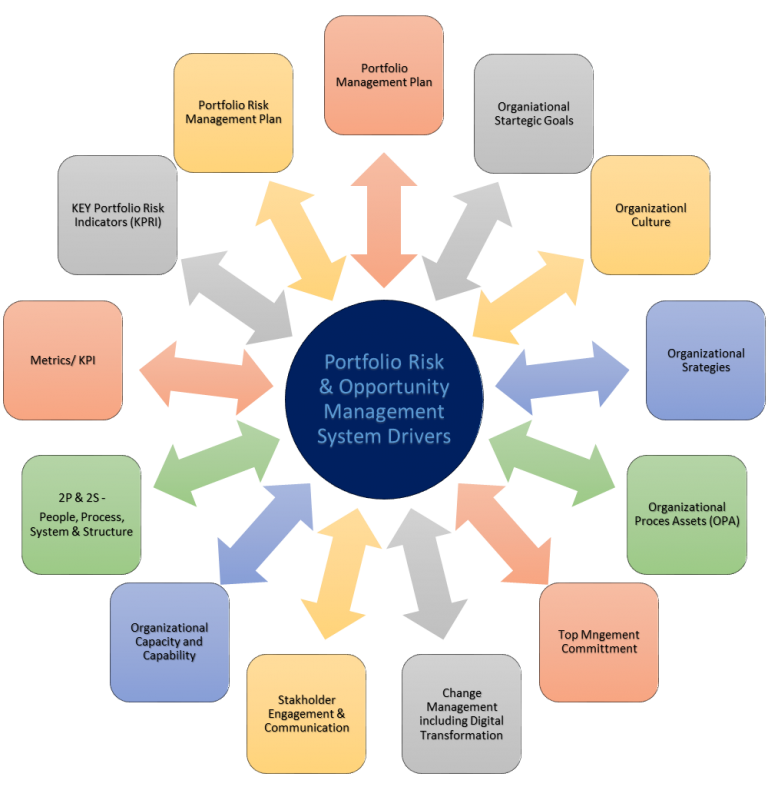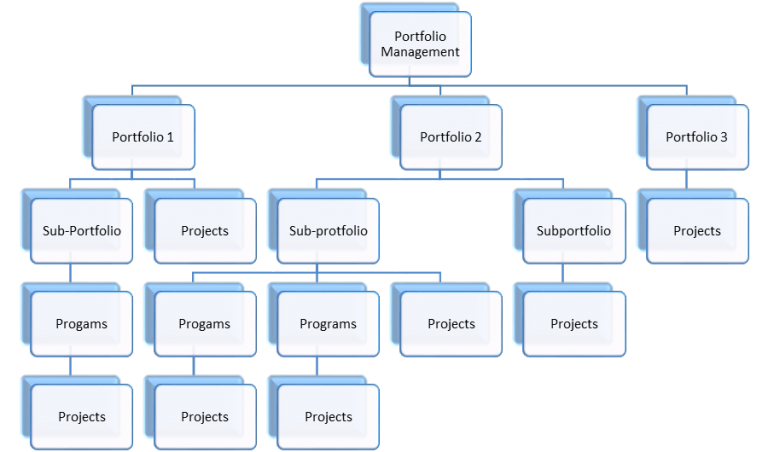- 647-792-0091
- marketing@gleeym.com
- 7 Concorde Place, Toronto
“Enhance opportunities and reduce threats by aligning sub-portfolios, programs and projects to meet organizational strategic goal”
This article illustrates the high-level components of Portfolio Risk & Opportunity Management. The risk is both threats and opportunity. The main goal is to minimize threats and maximize the opportunities for an organization. Consolidated, organized and well-connected approach is required to manage portfolios, programs, and projects at an enterprise level. Nache and robust system is needed to synchronize all the components of the risk management at corporate level i.e. Enterprise solution.
In this era of digitalization where sustainability and profitability are the main concerns for the big organization. Business transformation (Organizational Change) can only be successful if all the components are connected systematically to achieve organizational strategic goals.
This article provides headway to design, plan, and implement a Portfolio Risk management system at an enterprise level. This article is applicable to Oil & Gas, Construction, IT, Telecomm. Govt, and Utility sectors etc.!
A portfolio is, a collection of programs and projects, managed as a group to achieve organizational strategic goals by aligning and optimizing 2P & 2S; People, Process, System, and Structure with the corporate policy and the strategy.
Planning, designing and implementation of effective Project Portfolio Risk and Opportunity Management system mainly depends on organizational culture, top management commitment to risk management, stakeholders engagement, open and fair communication, processes and business objectives alignment to meet organizational strategic goals.
Portfolio dynamics play a pivotal role in shaping up the Portfolio Risk and Opportunity management system. These factors are fiscal boundaries, return on investment, organizational capacity and capability, internal and external forces, change drivers, business transformation dynamics, informational management system, and stakeholder dynamics (especially strategic stakeholders) etc.

Portfolio Risk and Opportunity management is decisively or crucially important for the success of managing portfolios where the cost of portfolio component failure is significant, or when risks of one portfolio component increase the risks in another portfolio component.
Portfolio Risk and Opportunity management contributes to portfolio component performance that may enhance customer satisfaction, product or service quality and productivity for sub-portfolios leading to substantial profitability and sustainability for an organization.
One of the goals of Project Portfolio Risk and Opportunity Management is to aligning sub-portfolios, programs, and projects risks with organizational strategic goals. Portfolio Risk Metrics / Key Performance Indicators (KPIs) help to check and validate the efficacy of the Portfolio Risk and Opportunity Management system i.e. planned vs actual. Successful and conclusive system foundation depends primarily on Portfolio Risk & Opportunity Management plan and Identifying Key Portfolio Risk Indicators (KPRI) at the portfolio level. Driving program and project risk management through Portfolio Risk & Opportunity Management plan and KPRI help to align the complete risk management process to meet organizational strategic goals.
Two (2) cardinal reasons for Portfolio Risk and Opportunity Management failure are:
Portfolio Risk and Opportunity management plan gives direction to achieve optimum desired results from the whole risk management process.
According to PMI Standard for Portfolio Management:
“Portfolio Risk is an uncertain event or condition that, if it occurs, has positive or negative effect on one or more project objectives. Risk may have one or more causes and, if it occurs, the corresponding effects may have positive or negative impact on one or more portfolio success criteria.”

Portfolio Risk and Opportunity Management is a structured process for assessing and analyzing portfolio, programs and projects risks with the goal of maximizing the opportunities and minimizing the threats. Also, mitigating those events, activities, or circumstances which can adversely impact the portfolio is an essential step towards benefit realization.
Simplified Portfolio Risk and Opportunity process flow is portraying underneath:

A well-connected, structured, process driven and stakeholder focused framework should be considered to plan, design and implement Portfolio Risk & Opportunity Management. Each complement of the portfolio, whether there is inter-dependency or not, must be aligned to achieve overall portfolio management objectives.
Integrating risk management to a portfolio level is challenging and require practical insight into how Portfolio Risk Management can be effective for benefits realization and meeting strategic organizational objectives. Risk management maturity across the organization can be achieved gradually by communicating with stakeholders on regular basis. Establish Portfolio Risk Governance framework for better control and direction.

Began the Portfolio Risk & Opportunity Management process by developing Portfolio Risk and Opportunity Management plan followed by conducting a series of Risk workshops, brainstorming session, and interviews with top management and managers at department level including Portfolio, Program and Project Managers to collect the initial inventory of risks. Each of these risks club together to make a list of ten (10) to fifteen (15) risks, Key Portfolio Risk Indicator (KPRI), that may hamper the portfolio objectives. Assign the departmental head of specific department as a Risk owner. Cluster identified t Program and Project Risks around KPRI for better monitoring and control. It helps to enhance the opportunities and reduce the threats in meeting organizational strategic goals.
We will create your mind map from you document or draft image/video or list of deliverables. You can send us the excel or csv file. In Basic Mind Map, we will create up to six (6) main topics, ten (10) subtopics for each main topic. Approx. three (3) to four (4) hours of work.
We will create your mind map from you document or draft image/video or list of deliverables. Generating mind map from idea, linking topics adding icons and pictures. You can send us the excel or csv file.
How it works?
Give us your idea, we will develop the mind map and get back to you for review and incorporating your comments. We will create up to ten (10) main topics, ten (10) subtopics for each main topic and five (5) topics for subtopics. Three level of mind map topics. Approx. eight (8) to ten (10) hours of work.
We will create your mind map from you document or draft image/video or list of deliverables. Generating mind map from idea, linking topics adding icons and pictures. You can send us the excel or csv file.
How it works?
Give us your idea, we will develop the mind map and get back to you for review and incorporating your comments. We will create up to ten (10) main topics, ten (10) subtopics for each main topic and five (5) topics for subtopics. Five (5) level of mind map topics. Linking topics, generating word document. creating activities from mind map. Approx. fifteen (15) to twenty (20) hours of work. Contact us to discuss
We offer customized solution like, project or business planning, problem solving, concept maps, process flow diagrams and facilitating workshops with the stakeholders. Contact us to discuss more.
Don’t miss our future updates! Get Subscribed Today!